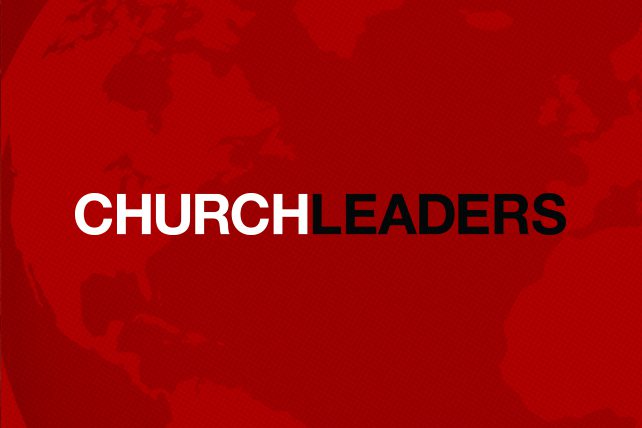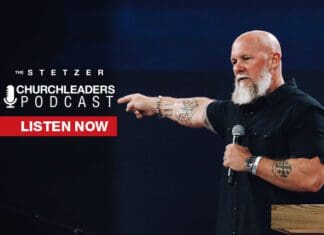The Most Lovely of All Virtues
(If you’ve ever lost a child to miscarriage, please be careful about reading further—this could be triggering and traumatic.)
“A bruised reed he will not break, and a smoldering wick he will not snuff out” (Isaiah 42:3)
It was one of those afternoons that changed the way I think of others every time I’m in a public place…
Brent and Vicky (not their real names) were dear friends of ours decades ago, a young couple working part-time for our church as Brent went to seminary. Like many couples do, they struggled with infertility and had an entire mid-sized church praying for them. We knew they’d be wonderful parents and so we were elated when we got the news that Vicky was finally pregnant.
Six months later Brent called me: “Gary, the baby has stopped moving. Vicky is going in for an ultrasound today. Please pray!” I threw myself on my knees and pled with God to bring healing to this baby. I just didn’t want our friends to face this grief.
God, in His own wisdom, chose to take the child to Himself. When I walked into the hospital room and looked at Vicky’s face, I didn’t have a single word to say. We cried together, and then Brent asked me to run a few errands with him.
First, we went to the funeral home to make arrangements. The tiny white coffin Brent purchased broke my heart, to think that such a tiny human was going to be buried. Brent then asked me to go with him to the mall to pick out something to put in the coffin with his baby boy.
They had called him “little bear” (or something like that) while he was growing in Vicky’s womb, and Brent wanted to find a tiny porcelain bear to place in the coffin. A plush bear would be bigger than such a small child—thus the search for a tiny figurine. I was already weighted down by grief, Brent even more so, but we shuffled into a large mall and then decided that one of two Hallmark-type stores would be our best bet to find what we were looking for.
The first store we walked into had a middle-aged woman at the counter. Brent saw a glass case with the perfect bear to bury with his son, and quietly asked how much it cost.
With a gruff, impatient, and challenging tone, the woman responded, “That bear is part of a set. If you want to buy that bear, you have to buy the whole set. You still want to see it?”
She didn’t want to be bothered to open the case.
I saw Brent flinch. Neither of us had much money to put together at the time; buying the whole set was unthinkable. I mentioned a similar store at the other end of the mall (it was a big mall), so with our heads cast down a little bit more, we shuffled with slightly shorter steps into another store with a young woman behind the counter.
“Hey guys, how ya doin’?” Her cheery voice lifted our spirits a little; here was someone who wasn’t overwhelmed by life and who didn’t seem to resent our presence.
Brent saw the exact same bear behind a case and asked, with an apologetic tone, “Is this bear part of a set?”
“Yes, it is, but let me see if my boss will let me sell it to you individually.” She made the effort to go into the back of the store, came out with a smile, told us the price, and I will never forget the look on Brent’s face. As a first-time dad, he didn’t want to disappoint his son. He had found the perfect gift to lay next to him.
As we walked out of the mall, it dawned on me that if you had asked the two salesclerks (one gruff, impatient, and unhelpful; one cheerful and kind) to guess where we had been before coming to the mall, they would never have imagined that we had left Vicky in her hospital room just after she experienced the still birth of a beloved child, and then gone to a funeral home to pick out a small white coffin. If you had asked these women why two young men were shopping for a tiny, porcelain bear, given a hundred years they wouldn’t have been able to guess that we were buying a bear to place in a beloved child’s coffin.
And that’s when it hit me: bruised reeds and smoldering wicks don’t wear signs on their foreheads, but they’re all around us. “Bruised reeds” are fragile and easily broken people. “Smoldering wicks” are souls so precariously holding on to their mental, emotional, and spiritual health that one unkind comment, one inappropriately quoted Scripture verse, can send them over the edge.
The Bible tells us that Jesus the Messiah was so gentle that He could interact with souls that fragile without doing further harm, and slowly nurse them back to health. Isaiah prophesied,
“A bruised reed he will not break, and a smoldering wick he will not snuff out” (Isaiah 42:3)
In businesses and churches, in stores and shopping malls, and even in ballparks, we are surrounded by bruised reeds and smoldering wicks. They don’t wear signs around their necks, but their hurting hearts and discouraged souls will be most nourished when they interact with a person who practices the virtue of gentleness, the mark of the Messiah.
Though Jesus gave Himself a number of figurative titles (such as the Good Shepherd and the light of the world), when it came to actually describing His character with specific virtues, there are only two virtues mentioned, and gentleness is one of them. In Matthew 11:29 Jesus describes Himself as “gentle and humble in heart.”
Before Jesus came, the prophets predicted that the Messiah would be known for His gentleness: “See, your king comes to you, gentle and riding on a donkey” (Zechariah 9:9, fulfilled in Matthew 21:5).
When the apostles looked back in memory of our Lord, they thought of this virtue: “By the humility and gentleness of Christ, I appeal to you” (2 Corinthians 10:1). The first-hand witnesses of Jesus thought of gentleness when they thought of Him.
Let’s put this together: the Bible predicted that Jesus would be gentle; Jesus affirmed that He was gentle; and the early church—the ones who saw Him face-to-face and watched Him interact with others in public—remembered Him as gentle.
However we may feel about God, He reveals Himself to be gentle.
If we want to carry the message of the Messiah, we need to also adopt the manner of the Messiah, and that manner is gentleness. To truly convey who Jesus is, it’s not enough to just repeat His words; it’s how we speak those words that most accurately conveys His Spirit. Jumping in with verbal saws to remove spiritual slivers doesn’t accurately represent the One who could touch bruised reeds without breaking them or speak to smoldering wicks without snuffing them out. The Spirit of the God-man, who was sent to reveal the nature of our Creator, was clothed in gentleness; and this virtue allowed Him to enter into the lives of broken, hurting people in a redemptive way. God wants to give each of His followers this same capacity for compassion.
In the next blog post, we’ll look at how we can begin to practice this virtue. For now, let us remember that every believer who wants to represent Jesus must aspire to what Ambrose calls “the most lovely of all virtues”—gentleness.
(By the way, the happy news is that after Brent and Vicky decided to adopt a child, Vicky was able to conceive again and carry that baby to term. They now have a full family of four children, two adopted and two biological.)
For more on practicing the virtues, take a look at Gary’s updated and re-released book The Glorious Pursuit: Becoming Who God Created Us to Be.












